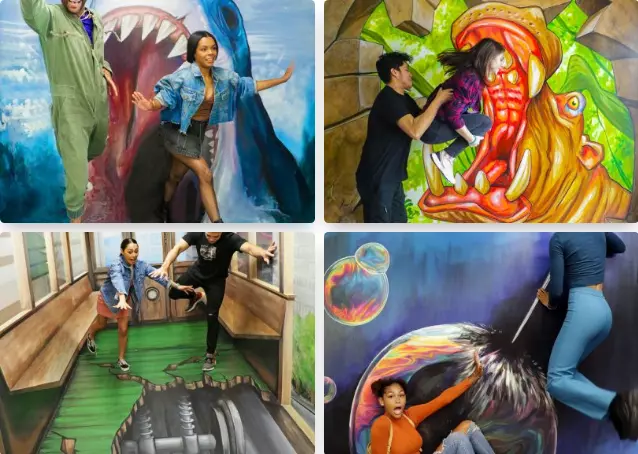Task 1
Imagine that you are preparing a project with your friend. You have found some interesting material for the presentation and you want to read this text to your friend. You have 1.5 minutes to read the text silently, then be ready to read it out aloud. You will not have more than 1.5 minutes to read it.
The term ‘contemporary art’ refers to art made and produced by artists living today. As such, it reflects the issues that shape our global, and rapidly changing world. Contemporary movements include pop art, performance art, installation art, video art, street art, computer art, to name a few.
Contemporary art is continuously evolving and more artists are taking advantage of new technology to further their creativity. For example, Cripto art, which takes advantage of blockchain technology, has been picking up steam since 2020. The digital artist, who goes by Beeple, is selling his works as NFTs. His work Everydays: The First 5000 Days sold for $69 million at Christie’s. It positions him ‘among the top three most valuable living artists,’ according to the auction house.
Task 2
Study the advertisement.
Art That Includes You!

You are considering visiting the world-class Museum of 3D Illusions, a highly interactive museum in San Francisco and now you’d like to get more information. In 1.5 minutes you are to ask four direct questions to find out about the following:
- time limit for visits
- e-gift cards
- if VIP tickets include a photographer
- school group packages
You have 20 seconds to ask each question.
Task 3
You are going to give an interview. You have to answer five questions. Give full answers to the questions (2–3 sentences). Remember that you have 40 seconds to answer each question.
Tapescript for Task 3
Interviewer: Hello everybody! It’s Teenagers Round the World Channel. Our guest today is a teenager from Russia and we are going to discuss natural world. We’d like to know our guest’s point of view on this issue. Please answer five questions. So, let’s get started.
Interviewer: How important is nature to you? What is your favourite natural place to visit?
Student: _________________________
Interviewer: Are there any nature reserves or protected areas in your region that you’ve visited or would like to visit? What interests you about them?
Student: _________________________
Interviewer: How does Russia protect its natural areas and wildlife?
Student: _________________________
Interviewer: How do environmental groups in Russia encourage the public to actively support environmental conservation?
Student: _________________________
Interviewer: Are there any natural wonders around the world that you’d like to visit in the future? What draws you to these particular places?
Student: _________________________
Interviewer: Thank you very much for your interview.
Task 4
Imagine that you and your friend are doing a school project “Social connections”. You have found some photos to illustrate it but for technical reasons you cannot send them now. Leave a voice message to your friend explaining your choice of the photos and sharing some ideas about the project. In 2.5 minutes be ready to:
- explain the choice of the illustrations for the project by briefly describing them and noting the differences;
- mention the advantages (1–2) of the two types of social connections;
- mention the disadvantages (1–2) of the two types of social connections;
- express your opinion on the subject of the project – which type of social connections presented in the pictures you prefer and why.
You will speak for not more than 3 minutes (12–15 sentences). You have to talk continuously.

